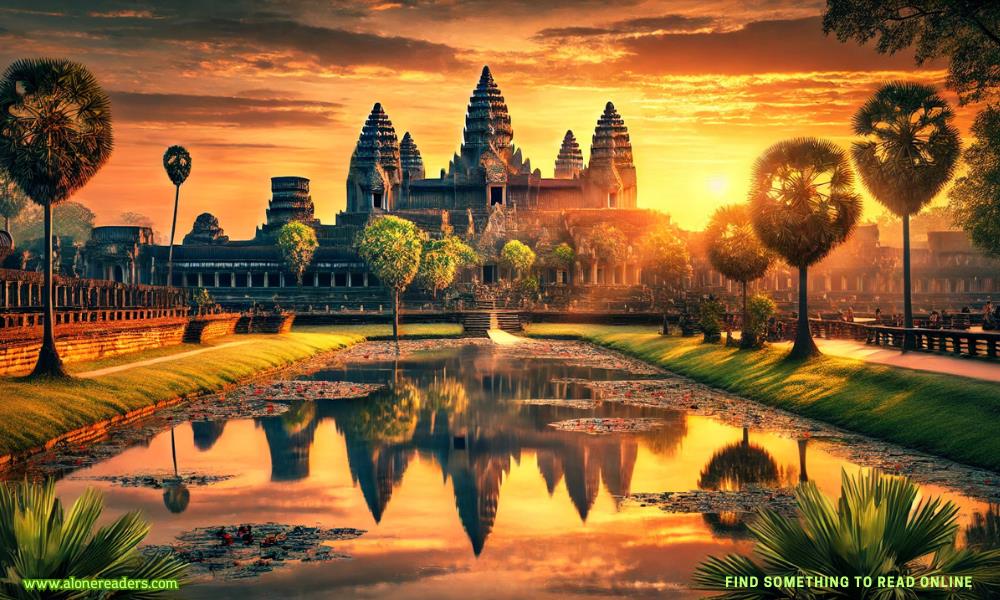
Angkor Wat, an awe-inspiring UNESCO World Heritage Site, has long captured the imaginations of explorers, historians, and spiritual seekers from around the world. Situated in the lush country of Cambodia, near the charming city of Siem Reap, Angkor Wat stands as a testament to the ingenuity and artistry of the ancient Khmer Empire. From its grand spires that glow under the early morning sun to its intricate carvings that reveal stories of the past, this archaeological wonder offers a glimpse into an era of colossal temple-building and rich cultural heritage.
Within this comprehensive guide, you will find details about Angkor Wat’s majestic beauty, the other temples nestled within the sprawling Angkor Archaeological Park, how to travel there, suggested accommodations and local cuisine, cost estimates for various activities, and precautionary tips to help you safely enjoy your journey.
Angkor Wat is often considered the heart and soul of Cambodia, symbolizing both the national identity and Buddhist spiritual legacy. Built initially as a Hindu temple dedicated to Vishnu in the early 12th century, this architectural marvel later transformed into a Buddhist temple. A visit here is like stepping into an ancient world: towering walls adorned with bas-reliefs depicting mythological battles, secret corridors leading to hidden shrines, and lotus-filled moats that heighten the serene ambiance.
Whether you are a history buff, a photography enthusiast, or a nature lover, Angkor Wat promises a once-in-a-lifetime experience. Beyond its storied silhouette, the neighboring temples present an equally enchanting perspective. Ta Prohm, famously known for its overgrown tree roots that pierce through collapsed structures, and Bayon, with its giant smiling stone faces, are just two of the must-see spots in the Angkor Archaeological Park.
Reaching Angkor Wat is relatively straightforward, especially if you start from Siem Reap, a vibrant city brimming with markets, restaurants, and cultural shows.
By Air:
By Bus:
By Taxi or Private Car:
Once in Siem Reap, Angkor Wat is merely a 15 to 20-minute tuk-tuk or taxi ride away. Taxis, tuk-tuks, and rented bicycles or scooters are the most common modes of transport to explore the vast temple complexes.
The Angkor Archaeological Park spans over 400 square kilometers and contains dozens of historically significant temple sites. When planning your itinerary, prioritize the following sites to ensure you capture the essence of Angkor:
Angkor Wat (The Main Temple Complex)
Angkor Thom and Bayon Temple
Ta Prohm
Banteay Srei
Preah Khan and Neak Pean
Siem Reap is well-equipped to host tourists, offering a variety of lodging options that cater to different budgets and preferences.
Budget Hostels and Guesthouses
Mid-Range Hotels
Luxury Resorts
Cambodian cuisine is often overshadowed by its neighbors, but a foray into local flavors will reward you with mouthwatering dishes:
Recommended Eateries:
Planning your budget is crucial to ensure a stress-free trip. Below is a rough estimate for a 3-day stay in Siem Reap while exploring Angkor Wat:
Visa and Entrance Fees:
Transportation:
Accommodation:
Food and Drinks:
Miscellaneous:
Overall, a comfortable 3-day trip including the Angkor temples can cost between USD 150–300 per person, not counting international flights.
While Cambodia is generally welcoming, it’s wise to remain cautious:
Stay Hydrated: The climate can be extremely humid. Carry bottled water, and remember to take breaks.
Sun Protection: Pack sunscreen, a hat, and lightweight clothing. The temples can be hot, especially around midday.
Respect Religious Etiquette: Wear modest clothing (covering shoulders and knees) and remove your shoes or hats when entering sacred spaces.
Beware of Scammers: While rare, some individuals may offer “free” tours or unexpected charges. Stick to official guides or do thorough research.
Secure Belongings: Petty theft can occur in crowded or tourist-heavy areas. Keep valuables secured, use hotel safes when possible.
Health Preparations: Consult your doctor about vaccinations or medications before traveling. Carry a small first-aid kit with essentials.
Final Thoughts
Angkor Wat is far more than just an archaeological site; it is an immersive journey through time, art, religion, and culture. Each temple reflects a chapter of the Khmer Empire’s ambitious legacy, leaving visitors awestruck and enlightened in equal measure. By exploring not only Angkor Wat but also Angkor Thom, Ta Prohm, Banteay Srei, and the many smaller temples in the region, you can glean an in-depth understanding of ancient Cambodian civilization.
From affordable accommodations and sumptuous Khmer cuisine to the kindness and hospitality of local communities, Siem Reap sets the stage for a memorable adventure. With a well-thought-out itinerary, a few words of caution, and a sense of wonder, your visit to the majestic temples of Angkor will undoubtedly become a highlight of your travels.
Whether you plan to stand in awe at sunrise amid the great towers of Angkor Wat or lose yourself in the tangle of roots at Ta Prohm, the Angkor Archaeological Park offers an experience that resonates long after your trip concludes. Embark on this journey prepared, and you will carry home not just photographs, but an enduring appreciation for human creativity and resilience—elements that shaped one of the most spectacular wonders of the world.